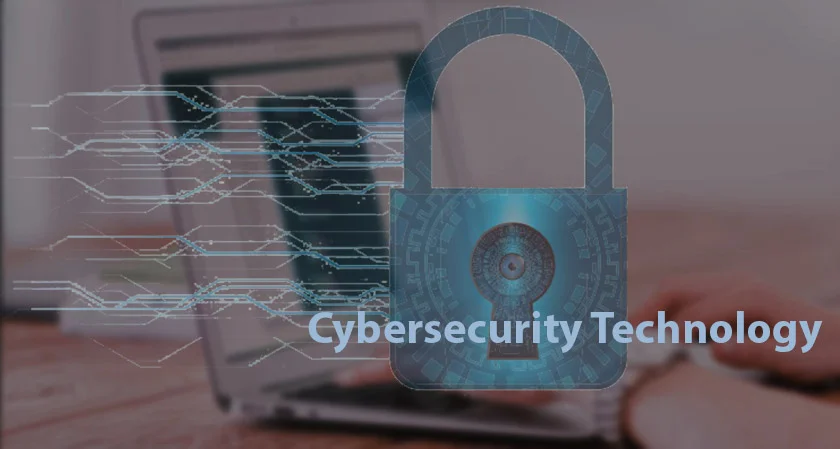Home Innovation Cyber Security What are the latest trends in ...
What are the latest trends in cybersecurity technology?
Cyber Security

Business Fortune
17 April, 2024
To simplify daily operations, corporations, organizations, governments, and businesses of all sizes have embraced digital technology. Keeping data safe from internet threats and unauthorized access is now a major concern. Trends in cybersecurity technology are changing along with technology; ransomware attacks, hacks, and data breaches are all becoming more frequent. Take security courses from professional instructors to enhance your knowledge and gain the skills needed for effective data protection.
Artificial Intelligence and Machine Learning
AI can enhance cyber threat detection, analysis, and response speed.
AI-driven Security can identify hidden data, detect abnormal data access, and alert cybersecurity technology experts about potential threats from unauthorized data access. This helps cybersecurity technology professionals save time by quickly identifying and resolving issues as they arise.
AI-powered risk analysis and AI-driven Security can automate incident replies and create incident summaries for high-fidelity warnings. This can result in an average of 55% faster alert investigations and triage. AI technology also aids in vulnerability identification, cybercrime, and cybercriminal defense.
AI-driven Security models can help balance security and user experience by assessing the risk of login attempts and verifying users using behavioral data. They can also streamline access for confirmed users and cut the cost of fraud by up to 90%. AI systems also contribute to maintaining a good security posture by thwarting malware, phishing, and other harmful actions.
Zero Trust Architecture
Zero Trust is a security framework that requires ongoing verification of all users—whether inside or outside the company's network—before giving access to network resources and information.
Networks can be local, in the cloud, or hybrid clouds; zero trust presupposes that there is no conventional network edge.
The Zero Trust model is not just a single product, but a set of design principles that create a framework. To be successful, it needs the appropriate operational plan, rules, architecture, products, Container Security, and integrations.
A zero-trust network follows these four main principles:
1. Make sure that all default access controls are set to "deny" for all users and devices. This means that all traffic traveling in both directions is always in an "untrusted" state.
2. Use a variety of preventive measures to verify every user and device when requesting network access.
3. Activate real-time monitoring and controls to detect and prevent harmful activities and modern threats, such as supply chain attacks and ransomware.
4. Complementing them are others that facilitate the company's more extensive, all-encompassing cybersecurity plan.
What are the benefits of Zero Trust?
Modern IT settings are better suited to the Zero Trust philosophy than traditional security techniques. This means not trusting any user or device completely, which is safer than only relying on security measures. Zero Trust helps minimize the risk of cyberattacks by restricting access and limiting the impact of any breaches. It also reduces the effects of phishing attacks and user credential theft. Zero Trust is effective in protecting against threats that traditional defenses may miss. It also helps mitigate the risks posed by IoT devices and Container Security.
Quantum Cryptography:
A subset of cryptography known as quantum cryptography secures communication by applying the ideas of quantum physics. The study of quantum mechanics in physics explains how matter and energy behave on the tiniest scales. It presents ideas that are essential to quantum cryptography, like entanglement and superposition. Quantum key distribution (QKD) is a fundamental procedure in quantum cryptography. Through QKD, two parties—typically identified as Alice and Bob—can create a shared secret key and communicate over an unsecure channel. Afterward, this key can be utilized with conventional encryption algorithms to enable safe communication.
Quantum encoding and decoding (QKD) uses quantum characteristics like photon phase or polarization to encode data. Bob receives a stream of photons from Alice, each with a distinct phase or polarization. Bob uses a random basis to measure the phase, or polarization, of the photons. Alice and Bob use a public channel for comparison to detect any manipulation or eavesdropping on photons.
The Advantages of Quantum Cryptography for Cybersecurity Technology
Quantum cryptography is more secure than classical cryptography. It uses physics rules, Threat Intelligence Sharing, and is resistant to computational attacks. It can detect eavesdropping and offers forward secrecy. Each key is used once and then discarded, keeping previous communications safe.
Cloud Security Solutions
Cloud Security Solutions protects data, apps, and infrastructure stored on cloud servers from cyberattacks and unauthorized access. It provides multiple layers of protection against DDoS attacks, illegal access, and data breaches. In the big data era, businesses must secure large amounts of sensitive data, including customer information, from threats.
Companies are using cloud services to support remote or hybrid workforces, Adaptive Authentication, gain agility, speed up time to market and manage large volumes of data.
The old network boundaries are disappearing, and security teams need to rethink their strategies to secure cloud data. More people than ever work remotely, and data and apps reside outside of data centers. Businesses must secure data and control access as it moves across different environments.
What are the benefits of Cloud Security Solutions?
- Greater visibility
- Easy backups and recovery
- Cloud data compliance
- Data encryption
- Lower costs
- Advanced incident detection and response
- Threat Intelligence Sharing
- Adaptive Authentication
DevSecOps
The acronym DevSecOps stands for "development, security, and operations." It refers to a software development approach that automates the integration of security practices throughout the entire product lifecycle, from design to deployment.
Development organizations need to change their approach to security, and DevSecOps is the solution. In the past, security was often added as an afterthought or ignored until the end of the development cycle. A security team will implement security measures, which will be tested by a quality assurance team. This worked when there were only a few software updates each year. Software engineers started using Agile and DevOps to speed up development, but the old approach became a bottleneck.
DevSecOps integrates application and infrastructure security into Agile and DevOps processes and tools. It addresses security vulnerabilities as soon as they appear, before they are deployed into production. This makes fixing them faster, easier, and cheaper.
DevSecOps redistributes the responsibility for application and infrastructure security. It moves it from a separate security team to a shared duty among the development, security, and IT operations teams. By automating the delivery of secure software without delaying the development cycle, DevSecOps enables Endpoint Detection and Response and "software, safer, sooner."
Benefits of DevSecOps
DevSecOps offers two primary advantages: speed and security. Development teams may therefore produce safer, better code more quickly and at a lower cost.
- Rapid, cost-effective software delivery
- Improved, proactive security
- Accelerated security vulnerability patching
- Automation is compatible with modern development.
- A repeatable and adaptive process
- Endpoint Detection and Response
Decentralized Security Protocols
The digital economy makes up 15.5% of the world's economy. It makes sense that the adoption of digital technologies and Security Automation has resulted in significant turnover across industry verticals.
Digitization, however, increases a company's vulnerability to damaging cyberattacks and data breaches.
Cyberattacks can cause serious damage and harm the reputation of any established company, regardless of its size.
The cost of cybercrime is one percent of the world's GDP. Global cybercrime operations are estimated to be worth USD 6 trillion annually on average. And by 2025, it's predicted to hit USD 10.5 trillion annually.
Blockchains are designed to offer distributed ledgers that are decentralized. This eliminates the need to rely on a single central agency for transaction verification. It also gets rid of outside interference. Single-point failures are reduced thanks to blockchains' decentralized architecture.
Blockchains have different participants, transaction processes, Security Automation, permissions, sizes, and roles, even though they are evenly distributed throughout the network.
Conclusion:
In conclusion, keeping up with the latest developments in cybersecurity technology necessitates a thorough comprehension of emerging trends and technology. These represent only a handful of the most recent advancements in cybersecurity technology. New tools and techniques may emerge to help companies and organizations protect their networks and data from cyberattacks, as the threat landscape evolves. Your cybersecurity technology plan will be stronger, and cyberattacks will be averted, if you include these cutting-edge technologies. Recall that maintaining your data's security requires being current with the newest advancements in cybersecurity technology, which is a continuous effort.
FAQ:
1. How does AI improve cybersecurity technology?
AI-powered systems can analyze large amounts of data to detect abnormal and dangerous behavior, such as a new zero-day attack. AI can automate security procedures, such as patch management, making it easier to meet cybersecurity technology requirements.
2. What is Zero Trust Architecture (ZTA) and why is it important?
With its foundation in the idea "never trust, always verify," Zero Trust aims to safeguard contemporary environments and facilitate digital transformation by leveraging network segmentation, strong authentication techniques, blocking lateral movement, offering Layer 7 threat prevention, and streamlining granular, "least access" policies.
3. What are the benefits of cloud security solutions?
Cloud data security guards against theft, corruption, unauthorized access, and security threats for data that is either being moved into or out of the cloud or stored there.
4. How does quantum cryptography enhance cybersecurity technology?
Because quantum cryptography uses the principles of physics to provide unbreakable security, it has the potential to completely transform cybersecurity technology. It provides unwavering security that is impervious to attack from any kind of calculation, not even from quantum computers.
5) What role does Blockchain for Cybersecurity play in cybersecurity technology?
A thorough risk management solution for a blockchain network is called blockchain security. It lowers the risk of fraud and threats by utilizing assurance services, cybersecurity technology frameworks, and best practices. Data structures created by blockchain technology include built-in security features.


































